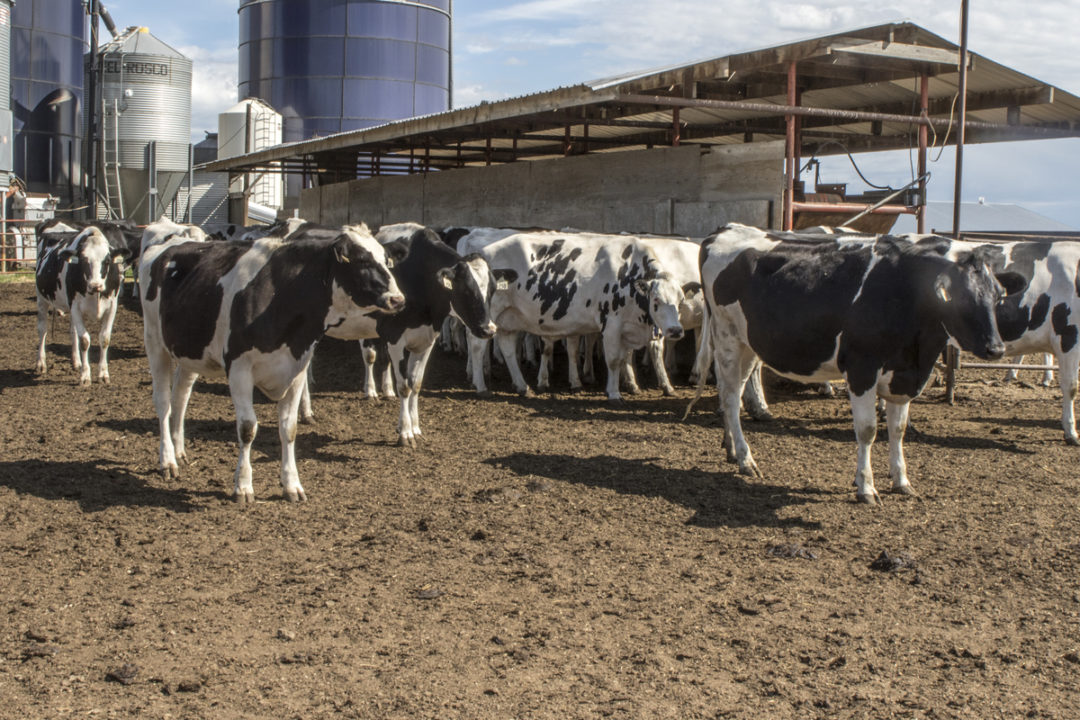A research group at Lincoln University in New Zealand is searching for environmentally friendly dairy cows. Dr. Pablo Gregorini is asking the question, “Can we address environmental concerns and meet consumer preferences by breeding more environmentally friendly cows?” So far, the answer is “yes.”
In grazing dairy systems, the two biggest environmental concerns are nitrogen losses to the environment, such as nitrate leaching into water systems, and greenhouse gas (GHG) emissions of methane and nitrous oxide. Nitrous oxide has the highest global warming potential (GWP) of the greenhouse gases at 273 times that of carbon dioxide, and methane has GWP of 28 times that of carbon dioxide. In other words, a given emission of nitrous oxide will trap much more heat than a given emission of carbon dioxide.
Dietary protein is the source of excreted nitrogen. Ruminant livestock has a notoriously low nitrogen use efficiency, rarely exceeding 40%. This means that approximately 60% of consumed nitrogen (i.e., protein) is not converted to animal products but is excreted through urine and feces.
Urea content of milk is an indicator of urine nitrogen excretions. Further, there appears to be natural animal-to-animal variation in milk urea nitrogen (MUN) content of milk, even when cows are consuming the same diet.
Gregorini is using a MUN breeding value (MUNBV) as a tool to select cows that have a smaller environmental footprint and additional health benefits to consumers.
“These cows excrete less nitrogen when urinating, and they have a different urination pattern,” Gregorini says. “They urinate more frequently, with smaller urine volumes per event, and the concentration of nitrogen in those urination events is lower and more evenly distributed.”
According to Gregorini, most cows have 1.2 ounces per gallon (9 grams per liter) of nitrogen in their urine, but the low-MUNBV cows have less than 0.8 ounce per gallon (6 grams per liter), a reduction of at least 33%.
“When you have cows in temperate grazing environments, there is an excess of nitrogen,” Gregorini says. “Ruminants will have a maximum use of nitrogen of 40 percent; that means that around 60 percent goes out the back end, and 80 percent of that goes through the urine. What these cows are doing differently is they are grazing differently, and they have a different nitrogen metabolism that leads to less nitrogen excretion per urination event and the urination events change. So literally, if you’ve got less nitrogen onto a pasture, you will have less nitrate leaching and less nitrous oxide emitted to the atmosphere.”
According to Dr. Andrew Foote, assistant professor at Oklahoma State University, we are on pace to meet the methane emission goals set by the Paris Agreement.
“However, nitrogen is a problem because it is a complicated issue with various factors contributing to it, not just excretion from animals but how we fertilize crops and manure management,” he says.
Foote also notes that protein can be the most expensive component of a ration and there are economic benefits to feeding less protein. As protein cannot be converted to meat and milk efficiently, animals excrete the excess; therefore feeding it in the correct quantity relative to the animals’ needs may also have economic benefits.
In addition to lower MUN breeding values, the Lincoln University cows are grazing multispecies pastures including plantain. The milk was analyzed showing a metabolomic profile consistent with the cows having enhanced well-being, and their milk amino acid and fatty acid profiles were improved. Furthermore, they found metabolic markers in the milk that may be associated with improved human health after consumption.
“We have animals in our herds now that are not only better for the environment but better for the humans who consume the end products,” Gregorini says. “We are what we eat. What we do with our animals and how we treat them has an impact on us.”
Dr. Sara Place, associate professor at Colorado State University, notes that of all U.S. agriculture, the single biggest category of GHG emissions is in soil management. This includes any nitrogen inputs, synthetic fertilizer, manure and other organic nitrogen inputs (urine and feces combined) that drive the biggest component of U.S. greenhouse gas emissions in terms of nitrous oxide.
“Emissions per unit of milk in the United States have declined substantially; that classic paper from Jude Capper showed emission reductions over 60 percent from the late 1940s to the mid-2000s and from the mid-2000s to now another 15 to 20 percent reduction in emissions per unit of milk,” Place says. “But the U.S. dairy industry has grown substantially in terms of total production. So just because we’ve reduced emissions per unit of milk doesn’t mean we’ve necessarily lowered total emissions from the industry because of expanded production.”
What should be considered when breeding an environmentally friendly cow? According to Place, animals are needed that have robust health and resilience in their environment longevity from a genetic standpoint, as well as feed efficiency.
Both MUN breeding values and reduced enteric methane production are heritable traits.
“The enteric methane piece is a little trickier but, just like nitrogen secretion, we can select for and reduce enteric methane production via genetic selection,” Place says. “From a climate perspective, nitrogen efficiency absolutely matters, and we can affect that by how we’re feeding the animals, matching nutrient requirements and not overfeeding nitrogen, so we’re not having that spillover in the urine.”
Some things can be done: timing and formulation of feed rations, matching metabolizable protein requirements and using feed additives to help cows lose less feed energy as nitrogen excretion and enteric methane and capture more of it in milk, especially with high-producing dairy cows. The industry can also select for animals with heritable traits for reduced enteric methane production and nitrogen secretion.
“There are opportunities as this research matures, and we get it out there in the real world and capture value because of cost savings from an efficiency standpoint as well as producers being able to demonstrate, ‘This is what I’m doing for the environment,’” Place says.






